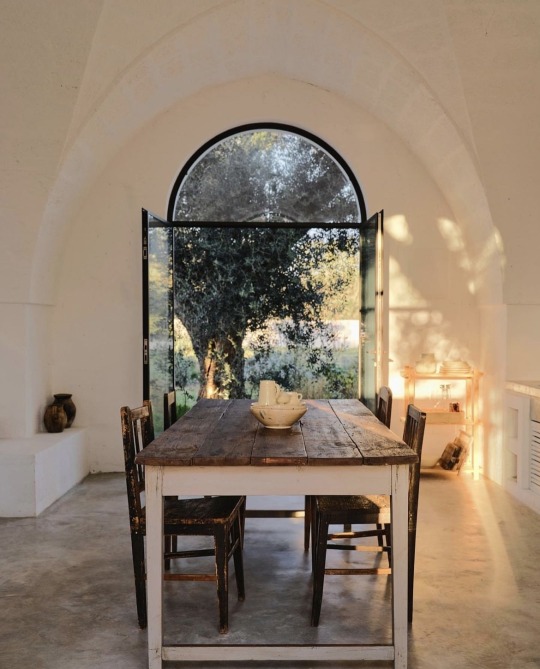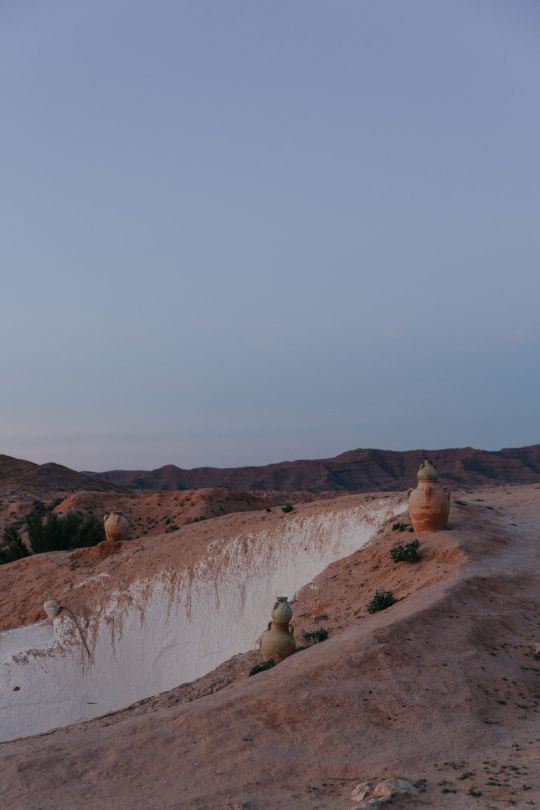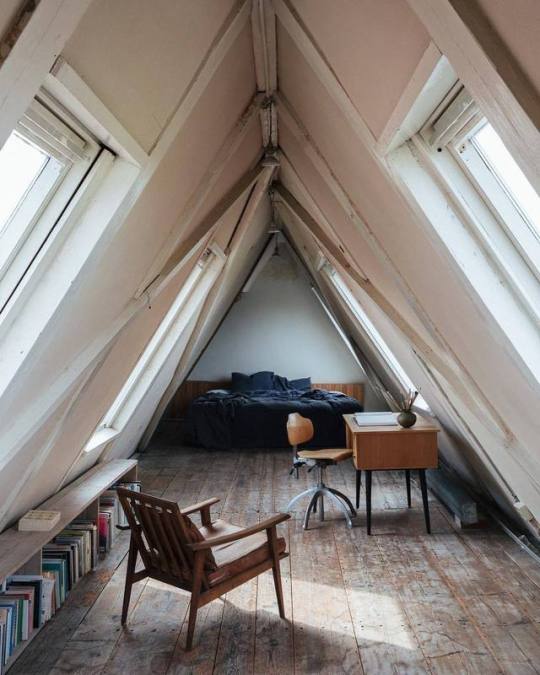#Marina Denisova
Photo
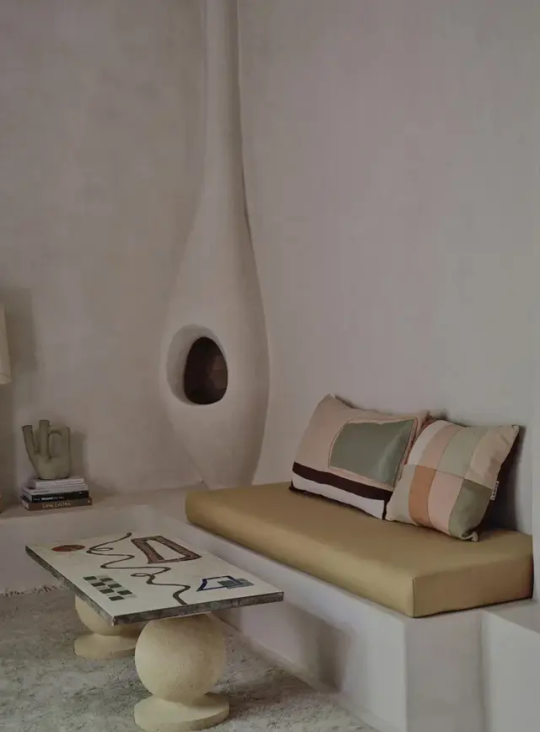
Rosemary hotel in Marrakech via Wallpaper*
Photography Marina Denisova
10 notes
·
View notes
Photo
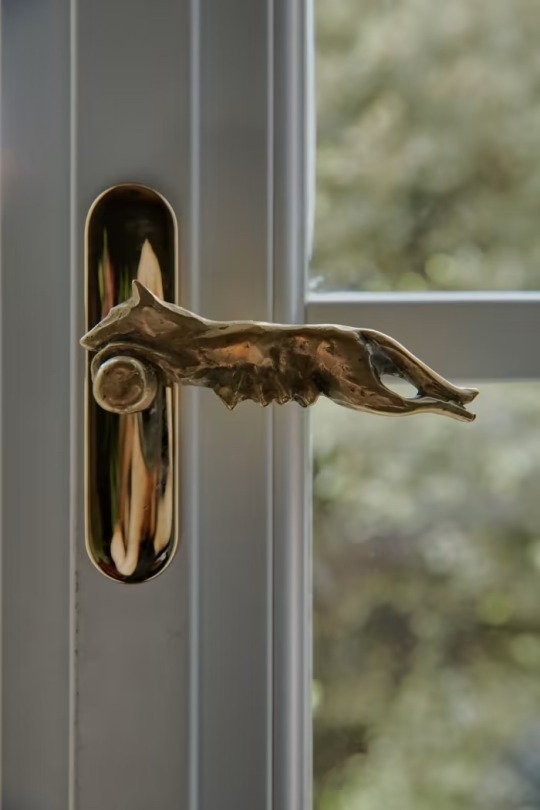
Paolo Canevari | © Marina Denisova | Financial Times
14 notes
·
View notes
Photo
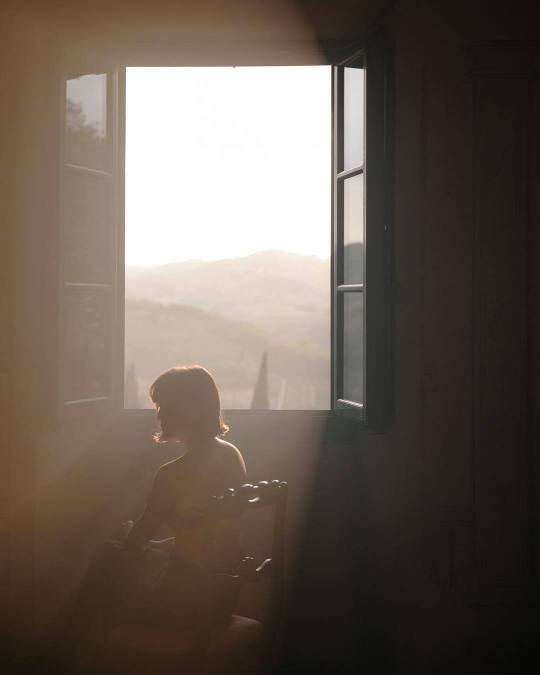
Marina Denisova
67 notes
·
View notes
Text
The Serial Vision Home of Barcelona by Mesura
In the book The Concise Townscape, Gordon Cullen states that “one building standing alone in the countryside is experienced as a work of architecture, but bring half a dozen buildings together, and art other than architecture is made possible. Several things begin to happen grouping, which would be impossible in an isolated building. We may walk through and past buildings, and as a corner is turned, an unsuspected building is suddenly revealed.”
In the Serial Vision Home, a big, wide hallway serves as the leading spine of the space. The house’s walls, which are understood as an integral structure, create a feeling of transition while passing them by, giving each room a distinct character and atmosphere. In this sense, the body of walls of this Barcelona home becomes a metaphor for Cullen’s group of buildings.
Transitioning Through Layering: Materiality as a Tool to Create Intuitive Spaces
As human beings, we are heavily influenced by the atmospheres surrounding us, effortlessly shaping our perceptions and changing our attitudes depending on the space we inhabit. In the Serial Vision Home, materiality assumes a leading role to help meet these premises and cover two primordial functions: setting the house’s mood and making every space intuitively identifiable. A soothing colour palette takes over the walls, ceilings, and floors to make these purposes palpable. This combination of tones creates a natural and pleasant environment; a sense of calmness reigns the space.
The walls are coated with natural mortar using an aerated lime base, changing colour depending on the light, and off-white paint in the brightest rooms. Floors are set up in wood, and in certain areas such as bathrooms, they are built in stone. These combinations of materiality, light and colour alter as the user walks from one end to another, shaping different experiences while transitioning through the wall-layering of the Serial Vision Home.
A Matter of Perspective: Distribution in the Serial Vision Home
The Serial Vision Home is defined by a long, wide corridor that functions as the vertebral axis to transition via the house. With multiple rooms opening on both sides, this space is conceptually cut in half to distinguish two main areas: day and night. The first one turns to one of Barcelona’s liveliest streets, which keeps it alive from dawn to dark. In this first half, we find the living room, the dining room, the kitchen, an open library, a multipurpose room, and a restroom. When transitioning to the night area, the spine hits its thinnest spot right in the centre, opening up again to unfold into a big, peaceful park. The master bedroom and bathroom, the studio, the playroom, and an additional bedroom and bathroom make up this second half of the construction.
The house uses the large hallway’s depth to accentuate the compartmentation between areas. In the first half, areas such as the living and dining room come across as active for their brightness and, from this point on to the night area, spaces change in colour one after the other to help understand their role. Again, with the help of light, materiality and colour palette, the user can oversee the mood alterations throughout the Serial Vision Home.
Connection Between Spaces: Walls as a Tool for Gathering and Intertwining
Each area in the Serial Vision Home is created to adapt to the users’ needs, natures, and lives. The day zone, in particular, is organized in four independent spaces (the living and dining room, library, and kitchen) and has been designed so that their traditional functions are now inherently connected. The result is a diaphanous area for the users to develop everyday life, leaving enough space to wander around.
This feeling is accomplished by an effort to open these formerly closed-up spaces; all master doors have been removed, and only two walls have been preserved, so a physical and dynamic visual connection is formed when walking through them.
All images by Marina Denisova
Courtesy of Mesura
3 notes
·
View notes
Photo

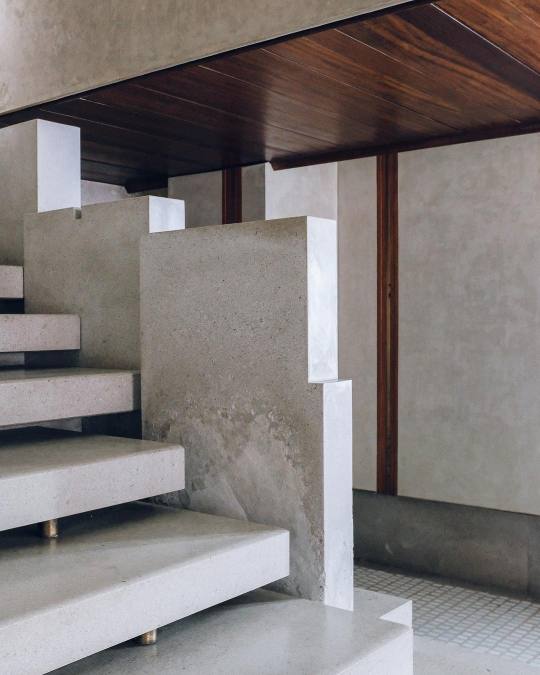
Marina Denisova. Olivetti showroom, Carlo Scarpa. Venice
14 notes
·
View notes
Photo

Oxaca, Mexico (from the pocoapoco residence) - by Marina Denisova for Open House Magazine.
#oxaca#mexico#pocoapoco#marina denisova#open house magazine#pocoapoco residence#landscape#cityview#pink#myuploads
8 notes
·
View notes
Photo
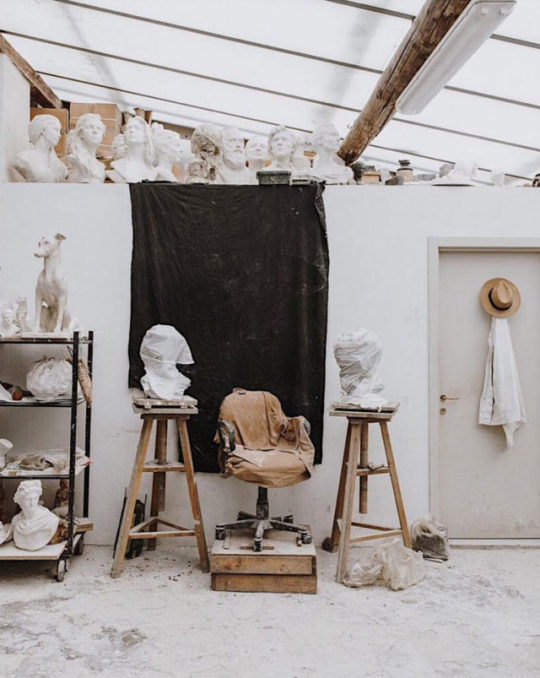
Marina Denisova
#sculpture#sculptor#marina denisova#bust#plaster#studio#art#art studio#sabonhome#interiors#interior design#artist#sculpted
416 notes
·
View notes
Text

Marrakech, Morocco via Instagram @_marinadenisova_
0 notes
Text
Villa AM — A Contemporary Saudi Arabian Home by Mesura
Mies van der Rohe said, "Architecture is the will of an epoch translated into space; living, changing, new. Not yesterday, not tomorrow, only today can be given form." In Jeddah, the historic centre of Saudi Arabia, something is changing in today's climate. As the city moves towards rapid modernization, its architectural values – which protect the area's distinct culture – are starting to disintegrate.
Giving shape to today's Jeddah is a complex endeavour. Its character is rooted in the past, while the mind is set towards the future. Villa AM results from a five-year working process with our client, who introduced us to a fantastic city, community and architecture. Taking local culture and climate as a tool to seek new spatial relationships, the house aims to answer the will of a changing today.
A changing community, a changing set of values for domestic architecture
Architecture is part of the land it lives in. In Jeddah, this story goes back to the beginning of the country. The city is the historic heart of a modernizing Saudi Arabia, characterized by a vast amount of vernacular architecture based on an ancient desert and Arabian culture — enriched by the presence of the sea and harbour. Contrary to popular assumptions, Jeddah is not Dubai.
To design in Jeddah's complexity, it's vital to understand its traditions, values, and beliefs. Traditionally, the Arabian home functions as a private sanctuary and a social, semi-public space, which constitutes an interesting paradox still defining most local architecture today. Villa AM carefully balances its design between preserving the core of this ancient building tradition and manifesting the mindset we find in the community of Jeddah today. The house thus aims to rethink a traditional way of living.
The exterior as an extension of the home and architecture acting as a passive system
In Jeddah, summers are long, sweltering, muggy, and arid, while winters are short, warm, dry, and windy. Aside from their social function, the exterior spaces of Arabian buildings (patios and rooftops) have an essential role in mitigating climatic factors. Since its foundation, the vernacular architecture in Jeddah has used its materials, courtyards and openings in an eco-efficient sense, creating cool and comfortable indoor home environments. Villa AM, in this sense, is no different.
The house looks for shade and breezes of air, which in Jeddah comes from the mythic East-North wind swaying about 10m above the ground. To get to that wind, the house's second floor drops to the back, creating a second patio looking out onto the city and the sunset to the West while alleviating the shape of the volume. Meanwhile, an outside passageway downstairs generates natural cooling across the ground floor.
Privacy and hospitality at home: architecture as a tool to shift perspectives and expectations
The programme of Villa AM reflects the habitual segmentation between guests, family and staff. Therefore, we traditionally find U-shaped houses in Jeddah, built around a shared courtyard and house the family on one side and guests on the other, doubling the installations needed for each of them. These are the remnants of an Arabian culture prone to visual privacy, which explains the particular placement and sizes of doors, windows and openings; the control of building heights and balconies; the movement fluxes that vary according to the house user.
Villa AM incorporates the family's openness, generosity and contemporary mindset. Though privacy is still present in the home's programme, the house uses its L-shaped form to create a closer relationship between family and guest by blurring its spatial limits and using the garden as in-between areas to connect the two visually. The house thus becomes a fluid entity — an initial step towards a new kind of domestic architecture in Jeddah.
The intensity of the ephemeral: light as an active agent determining architectural atmospheres
Light in Jeddah hits differently. Sunrays easily find their way through the windows and hit the house's interiors in a very daunting manner. Throughout the day, the place is capable of displaying multiple colour palettes. With sunrise and dusk being the most memorable moments, light in Jeddah goes from the coldness of the first hours to the heat and brightness of noon, finishing with still, peachy-coloured skies when the sun is setting.
Villa AM has been designed so that these three moments can be experienced through climate site-specific architectural decisions. The house is a continuous game of walls setting shade on the suitable space at the right time. Windows face all four directions, allowing the interiors to receive multiple types of lighting during the day, while exterior passageways are determined by high walls that create shadowed paths, enabling convenient use of these spaces even in the heat. Therefore, light becomes an active agent shaping the usability and mood of Villa AM.
Villa AM: a five-year-long cultural conversation and a journey into the unknown
Villa AM's grandeur doesn't only lay in its outcome. Memorable moments and crucial decisions have been taken in the process, shaping the house into what it looks like today. In 2016, when the project landed in our studio. We did not know what to expect: a challenging distance, a unique culture, and an inability to immediately overview what was going on. Again, designing for the unknown made so much sense.
Reflecting on the unfolding of the house, one can't help but ponder on the bond forged after five years of ongoing conversations with our client. A client who has allowed us to investigate without judgment and to make mistakes, helping us to understand and work on his willingness to create something different and unique that fit a set of contemporary values that we, as humans and architects, support as well.
Along the way, lessons, visions, and vernacular know-how have determined the project in unexpected and challenging ways. Differences encountered were seen as advantages, learning how to decode them and turn our vision into a reality that met the client's expectations, considered the land's culture and traditions, and aligned with the nation's vision of contemporaneity. Villa AM isn't only an architectural statement; it's a journey of discovery and audacity into the unknown.
All images by Marina Denisova
Words & images Courtesy of Mesura
1 note
·
View note
Photo
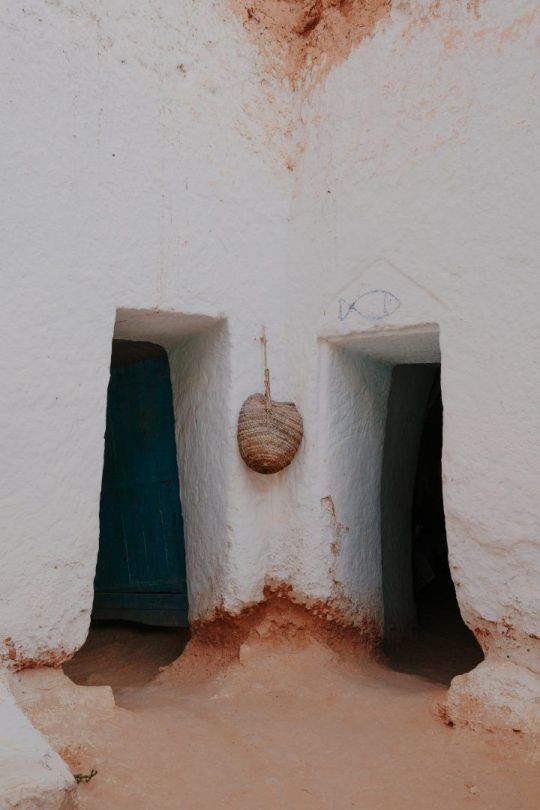


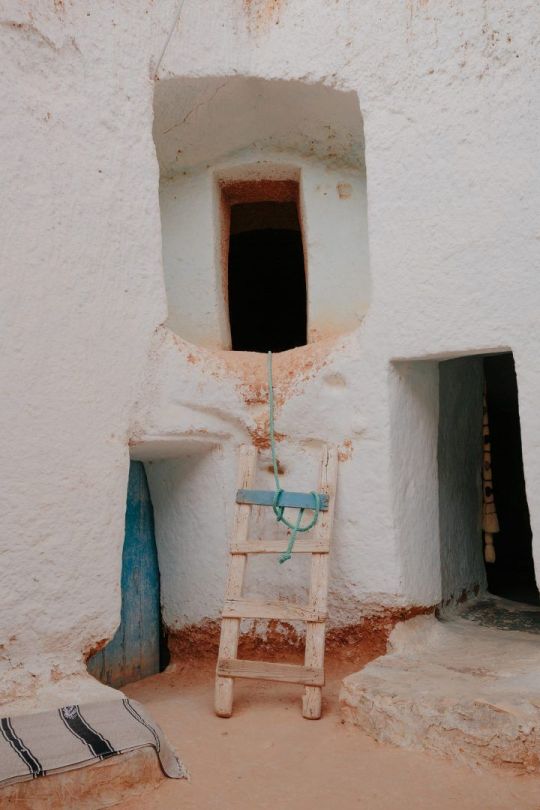
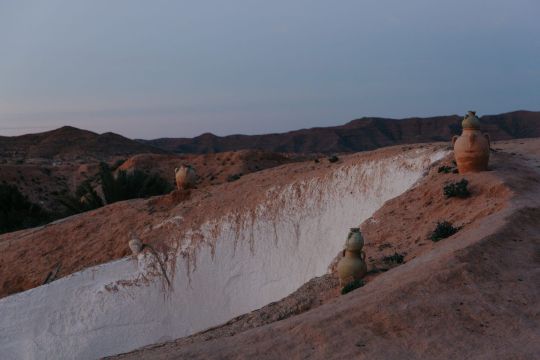
Marina Denisova - Matmata Troglodytes
0 notes




